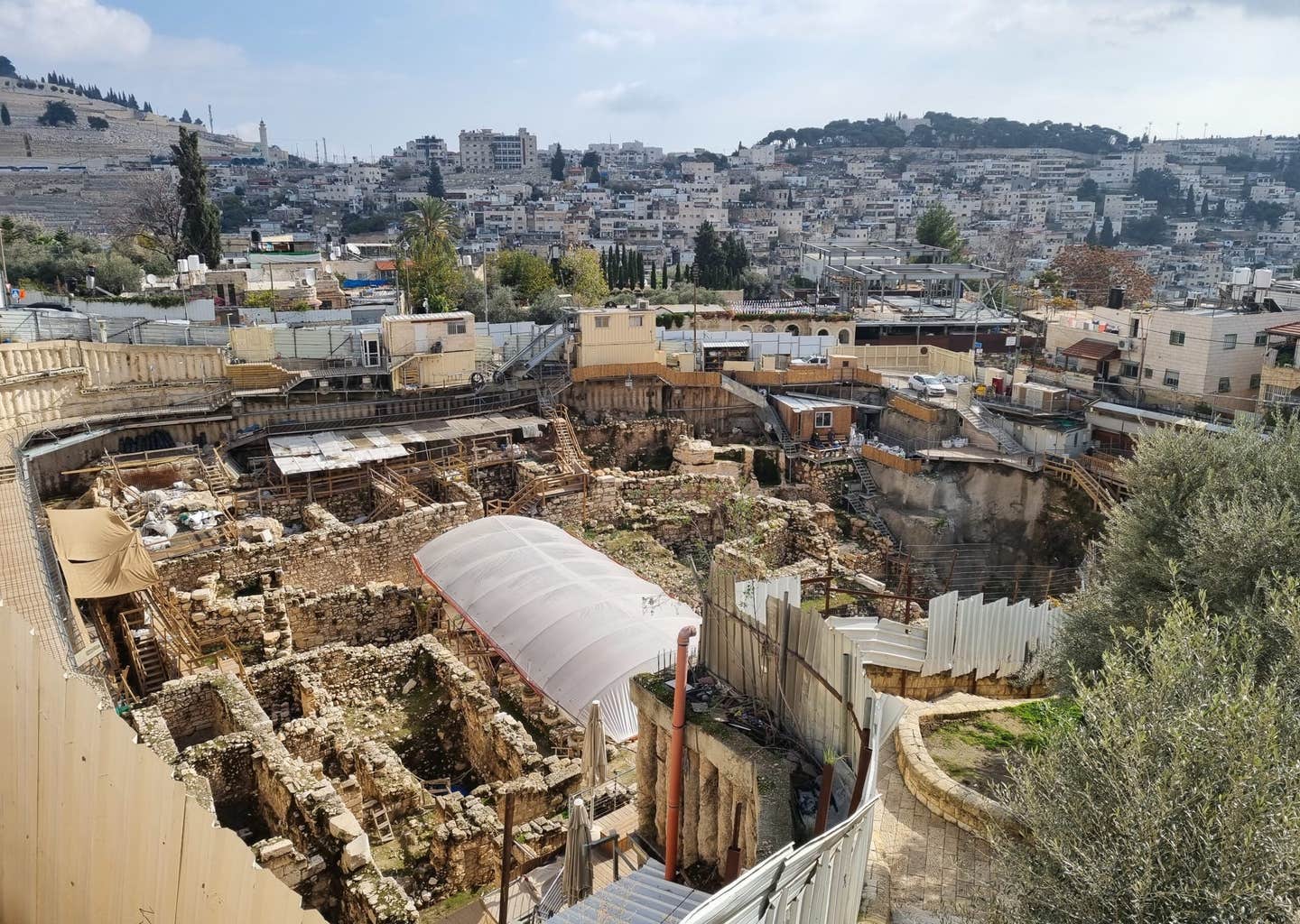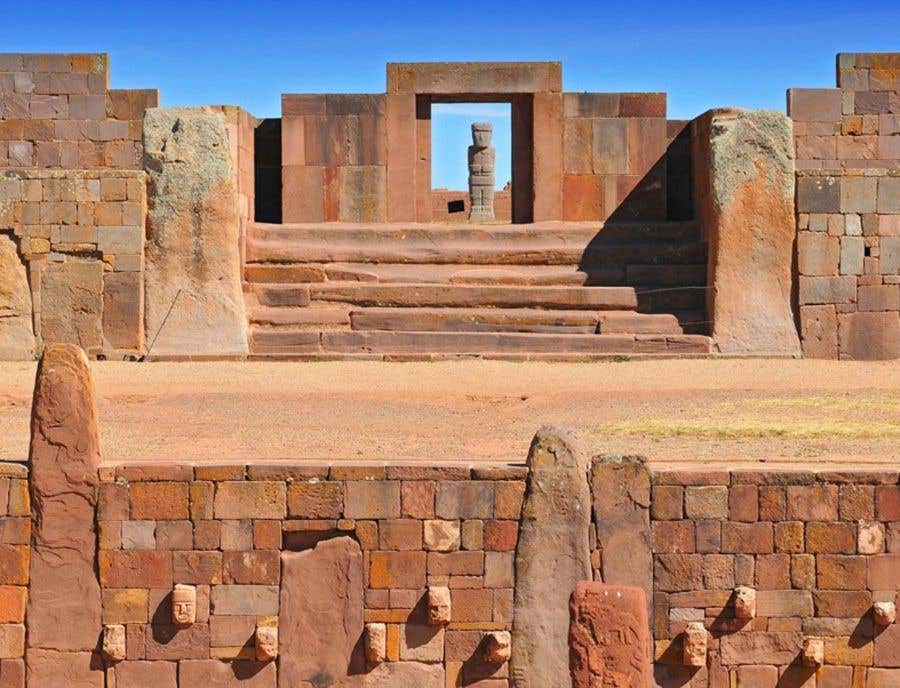Archaeologists unearth 3,000-year-old structure from the Bible in Jerusalem
Archaeologists have recently unearthed a massive structure in Jerusalem that is referenced in two books of the Bible.

A section of this trench was uncovered by British archaeologist Kathleen Kenyon. She found that the moat was slightly east of today’s Givati Parking Lot. (CREDIT: Maya Margit/The Media Line)
Archaeologists have recently unearthed a massive structure in Jerusalem that is referenced in two books of the Bible. The discovery includes the ruins of an ancient moat, constructed over 3,000 years ago in the City of David, one of history's oldest cities.
For a century and a half, researchers have been working to confirm that the city was divided into two distinct areas, as described in the Bible. With the unearthing of the moat, they have provided concrete evidence that the southern residential region was separated from the upper city in the north by this formidable structure.
The moat itself was about 30 feet deep and nearly 100 feet wide, with steep cliffs on either side, making it nearly impossible to traverse. According to the team, these findings confirm that the moat was constructed during the Iron Age, the same period when the Book of Kings and the Book of Samuel were written. These texts describe the division of the City of David into two parts: Ophel and Millo.
"This is a dramatic discovery that opens up a renewed discussion about the terms from the biblical literature that refer to the topography of Jerusalem, such as the Ophel and the Millo," stated researchers from the Israel Antiquities Authority (IAA). These terms, Ophel and Millo, are found in scripture to describe different sections of the City of David.
One reference appears in the first Book of Kings (11:27), where King Solomon is credited with building a structure called the "Millo." The passage reads: "…Solomon built up the 'Millo' and closed up the breach in the wall of the City of David his father."
Related Stories
The City of David, built by King David himself, was the birthplace of Jerusalem and served to unite Israel under a single capital. This ancient city was strategically positioned on a narrow, steep ridge overlooking surrounding hills and valleys, making movement between areas challenging.
Dr. Yiftah Shalev, the excavation director, noted, "It is not known when the moat was originally cut, but evidence suggests it was used during the centuries when Jerusalem was the capital of the Kingdom of Judah, almost 3,000 years ago, beginning with King Josiah." He further explained that during this time, the moat separated the southern residential part of the city from the ruling acropolis in the north, where the palace and temple were located.
The IAA has confirmed that construction plans of this magnitude typically date back to the Middle Bronze Age, approximately 3,800 years ago. Dr. Shalev added, "We are confident that [the moat] was used at the time of the First Temple and the Kingdom of Judah [in the ninth century BC]."
Yuval Gadot, a professor from Tel Aviv University’s Department of Archaeology and Ancient Near Eastern Cultures, echoed this sentiment, emphasizing that "the moat separated the southern residential part of the city from the ruling acropolis in the north, the upper city where the palace and the temple were located."
The researchers believe that the moat was designed not just as a defensive feature but also as a symbol of the City of David's altered topography. It was meant to showcase the rulers' power and their ability to defend the city against those who dared to enter its gates.
Back in the 1960s, a section of this trench was uncovered by British archaeologist Kathleen Kenyon. She observed that the moat was slightly east of today's Givati Parking Lot but initially concluded it was part of a natural valley rather than a man-made defensive structure.
Now, with the rest of the moat uncovered, archaeologists can assert with confidence that this trench was indeed constructed to defend the ancient city’s vulnerable northern border. Kenyon’s initial assumption that the formation was a natural valley has been proven incorrect, as her discovery was actually a continuation of the moat curving westward.
"Once again, discoveries are being revealed that shed new and vivid light on the biblical literature," said Eli Escusido, Director of the IAA. He added, "When you stand at the bottom of this giant excavation, surrounded by enormous hewn walls, it is impossible not to be filled with wonder and appreciation for those ancient people who, about 3,800 years ago, literally moved mountains and hills."
Note: Materials provided above by The Brighter Side of News. Content may be edited for style and length.
Like these kind of feel good stories? Get The Brighter Side of News' newsletter.
Rebecca Shavit
Science & Technology Journalist | Innovation Storyteller
Based in Los Angeles, Rebecca Shavit is a dedicated science and technology journalist who writes for The Brighter Side of News, an online publication committed to highlighting positive and transformative stories from around the world. With a passion for uncovering groundbreaking discoveries and innovations, she brings to light the scientific advancements shaping a better future. Her reporting spans a wide range of topics, from cutting-edge medical breakthroughs and artificial intelligence to green technology and space exploration. With a keen ability to translate complex concepts into engaging and accessible stories, she makes science and innovation relatable to a broad audience.



